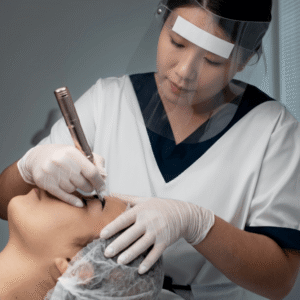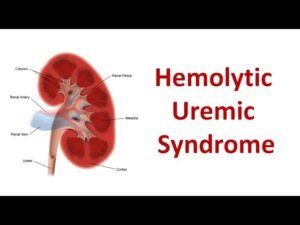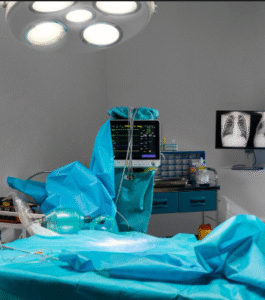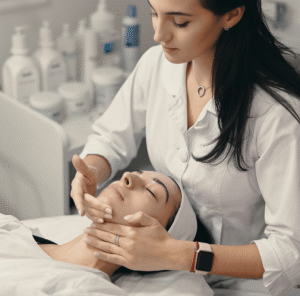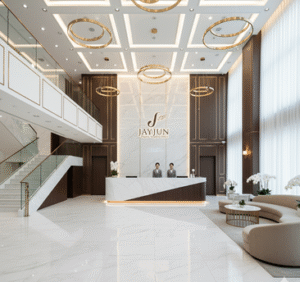➤ Overview
A stuffy nose, medically known as nasal congestion, occurs when the nasal passages become blocked or swollen, making it difficult to breathe through the nose. This common symptom can be caused by infections, allergies, environmental irritants, or structural issues within the nasal cavity.
In South Korea, nasal congestion is evaluated by ENT specialists, primary care physicians, and allergists. Accurate diagnosis is essential to relieve symptoms effectively, treat underlying causes, and prevent complications.
➤ Key Facts
→ Nasal congestion can affect people of all ages.
→ It may be acute (short-term) due to infection or chronic (long-term) due to structural or inflammatory conditions.
→ Common triggers include cold, flu, sinus infections, allergies, and environmental irritants.
→ Chronic nasal congestion can lead to sleep disturbances, headaches, snoring, and reduced quality of life.
→ In Korea, diagnostic evaluation often includes nasal endoscopy, imaging, and allergy testing.
→ Early treatment reduces the risk of secondary sinus infections or complications such as ear infections.
→ Management may involve medication, lifestyle changes, or minor surgical interventions for structural problems.
➤ What is a Stuffy Nose (Nasal Congestion)?
Nasal congestion is the result of swelling of the nasal tissues and blood vessels, often accompanied by excess mucus production:
→ Acute congestion – Usually short-term, caused by viral infections or allergies.
→ Chronic congestion – Persistent symptoms lasting more than 12 weeks, often due to sinusitis, polyps, or structural abnormalities.
→ Allergic nasal congestion – Triggered by pollen, dust mites, pet dander, or other allergens.
→ Non-allergic nasal congestion – Caused by irritants, medications, hormonal changes, or environmental factors.
→ Structural causes – Deviated septum, enlarged turbinates, or nasal polyps.
→ Rebound congestion – Can occur from overuse of nasal decongestant sprays.
Korean ENT specialists classify congestion based on duration, triggers, and anatomical findings to determine the most appropriate treatment.
➤ What Symptoms are Related to a Stuffy Nose?
Nasal congestion may occur with a variety of related symptoms, depending on the underlying cause:
→ Difficulty breathing through the nose – Main symptom of nasal blockage.
→ Runny nose (rhinorrhea) – Often accompanies allergic or infectious causes.
→ Postnasal drip – Mucus dripping down the throat causing irritation or cough.
→ Sneezing – Especially common with allergies.
→ Facial pressure or pain – Often associated with sinus infections.
→ Headache – Due to sinus pressure or inflammation.
→ Loss or reduction of smell (anosmia or hyposmia) – Frequently occurs with chronic congestion.
→ Snoring or sleep disturbance – Caused by blocked nasal passages.
→ Sore throat – From postnasal drip or mouth breathing.
➤ What Causes / Possible Causes?
Nasal congestion may result from infectious, allergic, structural, or environmental factors:
→ Viral infections – Common cold, flu, or other respiratory viruses.
→ Bacterial sinus infections – Sinusitis causing swelling and mucus buildup.
→ Allergic rhinitis – Seasonal or perennial allergies.
→ Non-allergic rhinitis – Triggered by irritants such as smoke, perfumes, or pollution.
→ Structural abnormalities – Deviated septum, enlarged turbinates, or nasal polyps.
→ Hormonal changes – Pregnancy, thyroid disorders, or hormonal fluctuations.
→ Medication-induced – Overuse of decongestant sprays, certain blood pressure medications.
→ Environmental factors – Dry air, temperature changes, or dust exposure.
→ Chronic inflammation – Long-term sinus inflammation due to repeated infections or allergens.
➤ When Should I See My Doctor?
Seek medical evaluation if nasal congestion is severe, persistent, or accompanied by concerning symptoms:
→ Congestion lasting more than 10 days without improvement.
→ Severe facial pain or pressure suggesting sinus infection.
→ High fever with nasal symptoms.
→ Bleeding from the nose or recurrent nosebleeds.
→ Loss of smell or taste lasting more than a few days.
→ Swelling around the eyes or vision changes.
→ Recurrent infections despite home care or over-the-counter treatments.
→ Congestion unresponsive to standard medications or lifestyle measures.
Prompt evaluation in Korea helps diagnose infections, allergies, or structural issues, allowing early treatment and preventing complications.
➤ Care and Treatment
Management of a stuffy nose focuses on relieving symptoms, treating the underlying cause, and preventing recurrence:
→ Nasal saline irrigation – Helps clear mucus and moisturize nasal passages.
→ Decongestants – Oral or nasal sprays for short-term relief (avoid long-term use to prevent rebound congestion).
→ Antihistamines – Effective for allergic causes.
→ Nasal corticosteroid sprays – Reduce inflammation in chronic or allergic rhinitis.
→ Humidifiers – Adding moisture to dry indoor air.
→ Avoiding triggers – Pollen, dust, smoke, or irritants.
→ Pain relief – Analgesics for sinus pressure or headache.
→ Lifestyle modifications – Adequate hydration, sleep, and elevating the head during sleep.
→ Surgical interventions – Septoplasty, turbinate reduction, or polyp removal for structural causes.
➤ Treatment Options in Korea
South Korea provides comprehensive ENT care for nasal congestion with advanced diagnostic tools and treatment options:
Diagnosis in Korea
→ Clinical examination – Nasal inspection, endoscopy, and symptom assessment.
→ Imaging – CT scans to evaluate sinus and structural issues.
→ Allergy testing – Skin prick or blood tests for allergic rhinitis.
→ Laboratory tests – To detect bacterial or viral infections.
Medical Treatments in Korea
→ Prescription nasal sprays – Corticosteroids or antihistamines.
→ Oral medications – Antihistamines, decongestants, or antibiotics if indicated.
→ Combination therapy – Addressing both inflammation and infection simultaneously.
Advanced Therapies in Korea
→ Endoscopic sinus surgery – For chronic sinusitis or structural abnormalities.
→ Minimally invasive procedures – Turbinate reduction, polyp removal.
→ Allergen immunotherapy – Desensitization for chronic allergic rhinitis.
Rehabilitation & Support in Korea
→ Patient education on nasal hygiene, trigger avoidance, and preventive care.
→ Follow-up care to monitor recurrence, assess treatment efficacy, and prevent complications.
→ Integration of ENT care with allergy and respiratory specialists for comprehensive management.


